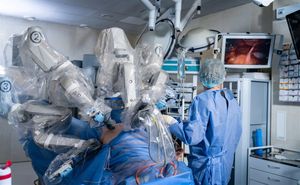Denver, Aug. 15, 2024 (GLOBE NEWSWIRE) -- The Global Down Syndrome Foundation (GLOBAL) is proud to support a groundbreaking new study published in Cell Reports by researchers from its partner and Affiliate, the Linda Crnic Institute for Down Syndrome (Crnic Institute) at the University of Colorado Anschutz Medical Campus, that reports important differences in oxygen physiology and red blood cell function in individuals with Down syndrome. The study is part of the ongoing Human Trisome Project, a large and detailed cohort study of the population with Down syndrome, including deep annotation of clinical data, the largest biobank for the study of Down syndrome to date, and multi-omics datasets.
The Crnic Institute team first analyzed hundreds of blood samples to identify physiological differences between research participants with Down syndrome versus controls from the general population. They observed that triplication of chromosome 21, or trisomy 21, the chromosomal abnormality that causes Down syndrome, leads to a physiological state reminiscent of hypoxia, or low oxygen. They identified major changes in gene expression indicative of low oxygen availability, including induction of many hypoxia-inducible genes and proteins, as well as increased levels of factors involved in the synthesis of heme, the molecule that transports oxygen inside red blood cells.
“These results reveal that hypoxia and hypoxic signaling should be front and center when we talk about the health of people with Down syndrome,” says Dr. Joaquín Espinosa, executive director of the Crnic Institute, professor of Pharmacology, Principal Investigator of the Human Trisome Project, and one of the senior authors of the paper. “Given the critical role of oxygen physiology in health and disease, we need to understand the causes and consequences of hypoxia in Down syndrome, which could lead to effective interventions to improve oxygen availability in this deserving population.”
“The results are remarkable, it is safe to say that the blood of people with Down syndrome looks like that of someone who was quickly transported to a high altitude or who was injected with erythropoietin (EPO), the master regulator of erythropoiesis, the process of new red blood cell formation,” explains Dr. Micah Donovan, lead author of the paper. “Although it has been known for many years that people with Down syndrome have fewer and bigger red blood cells, this is the first demonstration that they overproduce EPO and that they are undergoing stress erythropoiesis, a phenomenon whereby the liver and the spleen need to start producing red blood cells to supplement those arising from the bone marrow."
The team discovered that these phenomena are also observed in a mouse model of Down syndrome, thus reinforcing the idea that these important physiological changes arise from triplication of genetic material and overexpression of specific genes.
“The fact that hypoxic signaling and stress erythropoiesis are conserved in the mouse model paves the way for mechanistic investigations that could identify the genes involved and reveal therapeutic interventions to improve oxygen physiology in Down syndrome,” explains Dr. Kelly Sullivan, associate professor of pediatrics, Director of the Experimental Models Program at the Crnic Institute, and co-author in the study.
The study team also investigated whether the elevated hypoxic signaling and associated stress erythropoiesis was tied to the heightened inflammatory state characteristic of Down syndrome. Although individuals with the stronger hypoxic signatures show more pronounced dysregulation of the immune system and elevated markers of inflammation, their results indicate that lowering inflammation does not suffice to reverse the hypoxic state.
“We will need a lot more data to understand what is causing the hypoxic state and its impacts on the health of people with Down syndrome,” says Dr. Matthew Galbraith, assistant research professor of pharmacology, Director of the Data Sciences Program at the Crnic Institute, and one of the senior authors of the paper. “The hypoxic state could be caused by obstructive sleep apnea (which is common in Down syndrome), cardiopulmonary malfunction, or even perhaps defects in red blood cell function. We are very excited about several ongoing clinical trials funded by the NIH INCLUDE Project for obstructive sleep apnea in Down syndrome, which we believe will be very informative.”
The Crnic Institute study team is already planning several follow up studies, with the explicit goal of illuminating strategies to improve oxygen physiology in the population with Down syndrome.
“This is another huge breakthrough from our scientists at the Crnic Institute that we hope will lead to additional treatments quickly,” says Michelle Sie Whitten, president & CEO of Global Down Syndrome Foundation, a partner and an Affiliate organization of the Crnic Institute. “As a mother of a brilliant 21-year-old with Down syndrome I am eager to understand how to normalize oxygen physiology safely and how that may improve the lives of millions of people with Down syndrome across the world. We are proud that GLOBAL’s advocacy work with Congress and with the National Institutes of Health (NIH) has led to the establishment of the trans-NIH Down syndrome funding project, INCLUDE, that underwrites this and numerous other groundbreaking studies and clinical trials.”
About the Linda Crnic Institute for Down Syndrome
The Linda Crnic Institute for Down Syndrome is one of the only academic research centers fully devoted to improving the lives of people with Down syndrome through advanced biomedical research, spanning from basic science to translational and clinical investigations. Founded through the generous support and partnership of the Global Down Syndrome Foundation, the Anna and John J. Sie Foundation, and the University of Colorado, the Crnic Institute supports a thriving Down syndrome research program involving over 50 research teams across four campuses on the Colorado Front Range. To learn more, visit www.crnicinstitute.org or follow us on Facebook and Twitter @CrnicInstitute.
About the University of Colorado Anschutz Medical Campus
The University of Colorado Anschutz Medical Campus is a world-class medical destination at the forefront of transformative science, medicine, education and patient care. The campus encompasses the University of Colorado health professional schools, more than 60 centers and institutes, and two nationally ranked independent hospitals - UCHealth University of Colorado Hospital and Children's Hospital Colorado – which see more than 2 million adult and pediatric patient visits yearly. Innovative, interconnected and highly collaborative, the University of Colorado Anschutz Medical Campus delivers life-changing treatments, patient care and professional training and conducts world-renowned research fueled by $705 million in research grants. For more information, visit www.cuanschutz.edu.
About Global Down Syndrome Foundation
The Global Down Syndrome Foundation (GLOBAL) is the largest non-profit in the U.S. working to save lives and dramatically improve health outcomes for people with Down syndrome. GLOBAL has donated more than $32 million to establish the first Down syndrome research institute supporting over 400 scientists and over 2,500 patients with Down syndrome from 33 states and 10 countries. Working closely with Congress and the National Institutes of Health, GLOBAL is the lead advocacy organization in the U.S. for Down syndrome research and care. GLOBAL has a membership of over 100 Down syndrome organizations worldwide, and is part of a network of Affiliates – the Crnic Institute for Down Syndrome, the Sie Center for Down Syndrome, and the University of Colorado Alzheimer’s and Cognition Center – all on the Anschutz Medical Campus.
GLOBAL’s widely circulated medical publications include Global Medical Care Guidelines for Adults with Down Syndrome, Prenatal & Newborn Down Syndrome Information, and the award-winning magazine Down Syndrome World TM. GLOBAL also organizes the Be Beautiful Be Yourself Fashion Show, the largest Down syndrome fundraiser in the world. Visit globaldownsyndrome.org and follow us on social media Facebook, X and Instagram.
###
Attachment

Cole Wilkes Global Down Syndrome Foundation (720) 548-5667 cwilkes@globaldownsyndrome.org Allison Munk Global Down Syndrome Foundation (720) 548-5632 amunk@globaldownsyndromefoundation.org






